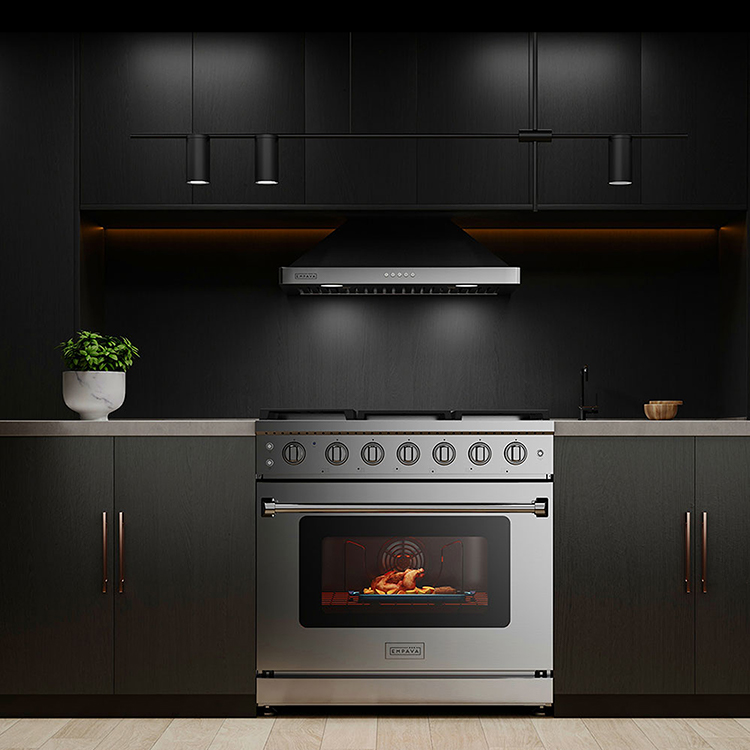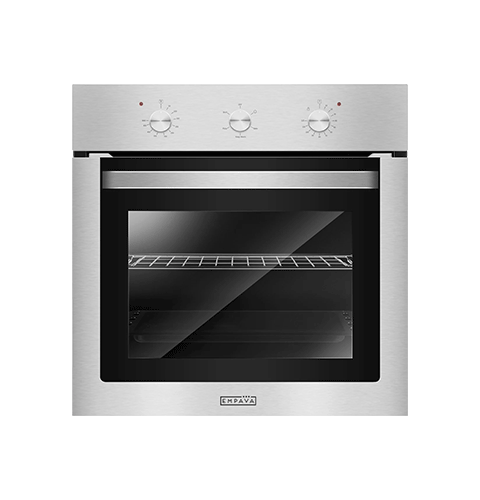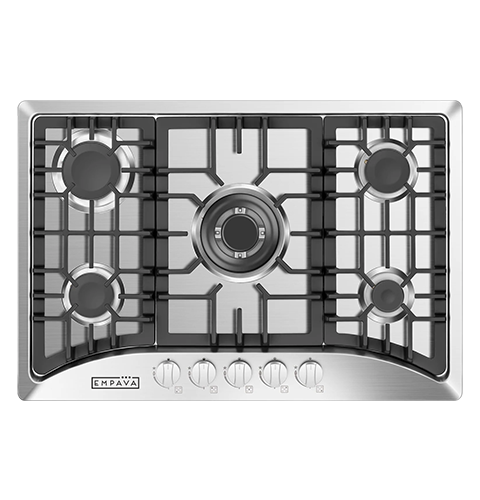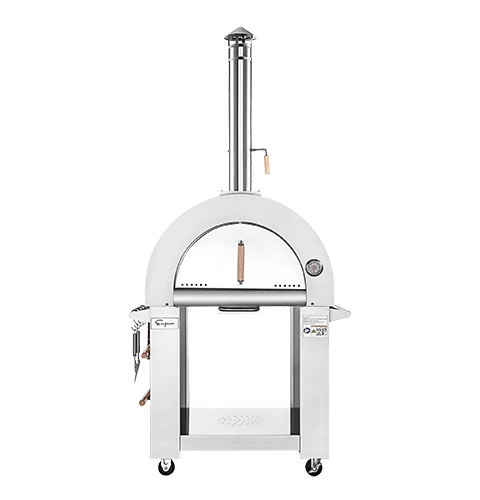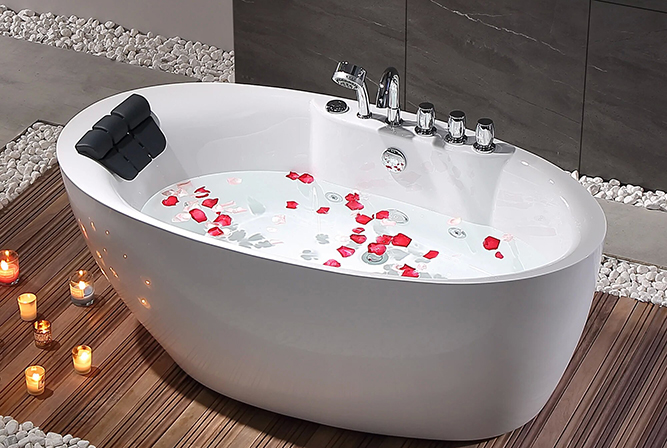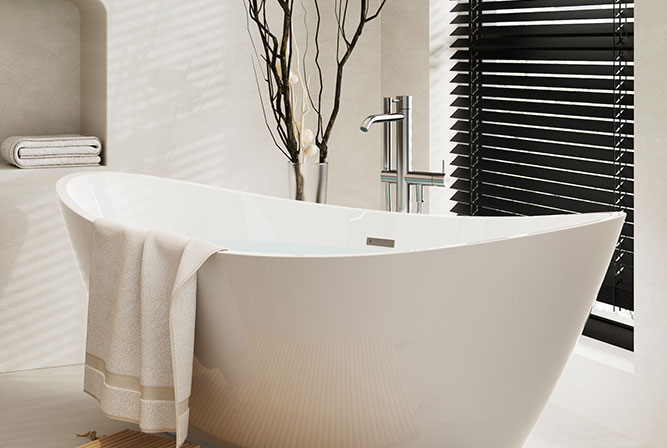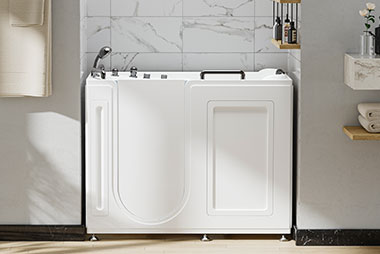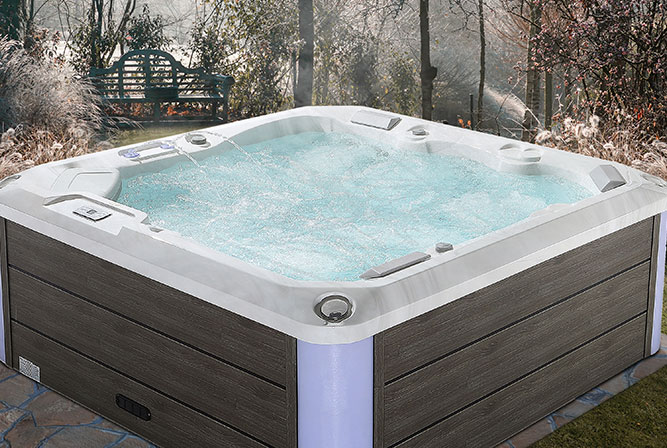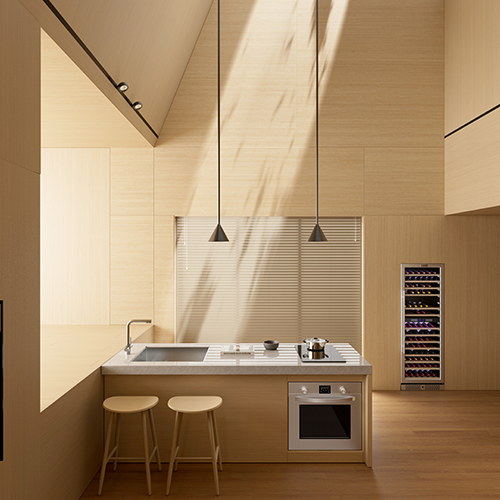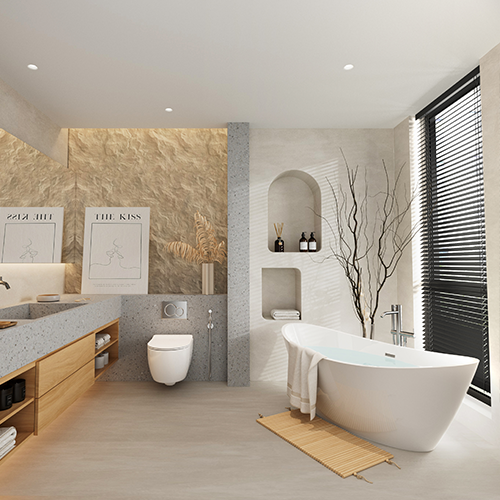What should I look for when buying a gas cooktop?
When you are looking for a gas cooktop here are some factors you should consider: the number of burners required, the material of the burners, and features like automatic ignition.
How many burners are required?
There are mainly 3types of gas stoves based on the number of burners – burners, 3 burners, and 4 burners. Three and four burners cooktops are ideal for a medium-sized to large family.
Which material is the best for burners?
Brass burners are quite durable and are more resistant to corrosion. All our gas cooktops have heavy-duty brass burners that can withstand without losing their sheen. These burners are designed to ensure uniform heat distribution for efficient cooking.
What are the smart features to look for in a gas cooktop?
Top-rated gas cooktops come with automatic ignition. When you turn the knob off the gas stove, it ignites the gas in the burner. Also, look for easy control knobs that are comfortable for grip.
How to clean the surface of my gas cooktop?
Stainless steel surfaces- Clean stainless steel areas by using mild soapy water and a soft cloth. Wipe in the direction of the stainless steel grain when washing and drying. Rinse with water and wipe dry to avoid watermarks. Do not use cleaners that are abrasive or contain chlorine since both are corrosive to stainless steel. For added shine, apply a stainless steel conditioner and wipe off the excess with a soft cloth
Stainless steel conditioners and cleaners can have negative effects on materials other than stainless steel. Do not apply stainless steel conditioners and cleaners to control labels, logos, black stainless steel, or appliance interiors.
Porcelain surfaces- Immediately wipe up acid spills like fruit juice, milk, and tomatoes with a dry cloth. Do not use a damp sponge or cloth on hot porcelain. When the porcelain is cool, clean it with hot, soapy water and a soft cloth. Rinse and dry. It is normal for porcelain to show fine lines with age due to exposure to heat and food.
Painted surfaces- Wash with hot, soapy water and a soft cloth. Rinse and dry. Do not use powdered cleaners, steel wool pads, oven cleaners, and other abrasive cleaning materials.
How to clean the burners.
Burner caps- Wash the burner caps with hot, soapy water and a soft cloth. Do not soak the burner caps. Rinse and then dry thoroughly. Nonabrasive cleaners and liquid cleaners may also be used.
Burner bases- Make sure the cooktop has cooled completely before cleaning the burner bases. Clean the burner bases with hot water, mild detergent, and a soft cloth. Use a stiff nylon toothbrush to clean the port openings and do not scratch or gouge them. Rinse and dry thoroughly.
Gas igniters- After the igniters have cooled down, carefully wipe the igniters with a cotton swab dampened with water. Gently scrape the soil off with a toothpick. Avoid exposing the igniters to excessive water, as a damp igniter may not light up. Remove any lint that may remain after cleaning.
What should I look for when buying an induction cooktop?
Power Rate of the Cooktop
The first point that you need to consider when looking for an induction cooktop is the power rate. A higher power rate ensures faster cooking, though it may also cost more. Most induction cooktops rate between 1000-2000W. So, if you need something that helps you cook faster, you need to opt for an induction cooktop with a higher power rate.
Pre-set Menu
For the convenience of the users, some of the latest induction cooktops come with a pre-set menu. Depending on the dish that you cook, the pre-set menu adjusts the temperature of the appliance. So, whether you are boiling milk, making rice, roti and frying vegetables, the induction cooktop adjusts the temperature accordingly so that you get perfectly cooked dishes with a single touch.
Safety Features
This is another important factor to consider when looking for an induction cooktop. Modern induction cooktops such as the one from KENT comes with an auto-pan detection feature, which ensures heating is turned-off as soon as you remove the cookware from the cooktop. In addition, if you forget to switch off the appliance, the cooktop will automatically switch off if the pan is too hot.
Pan Size of the Cooktop
Every induction cooktop comes with a minimum and maximum pan size. If the cookware is smaller than the supported pan size, the cooktop will not detect the pan and won’t start heating the pot. The size of the cookware needs to match the coil size of the induction cooktop for maximum efficiency.
Portability of the Cooktop
Depending on the preference of the users, they can choose from portable or fixed cooktops. A portable induction cooktop makes it convenient for the user to take the appliance anywhere they want. Whether you are planning to cook on your rooftop or backyard, a portable cooktop makes it easy to carry the appliance anywhere.
Hat should I take into consideration when buying a pizza oven?
Space Available at Home
Measure the space available for the installation of your pizza oven, so that it will fit comfortably in your entertaining area and give you enough space to move around for cooking and socializing. In addition, wood-fired pizza ovens put off smoke so consider a long chimney to move the smoke out of the chef's way.
If you’re not moving anywhere in the next 5 years, you may consider a heavier oven or building an oven into the existing structure of your home, either indoors or outdoors. There are beautiful authentic brick ovens from
Portugal is heavy so would need to have a permanent location until you decided to move it. There are also pizza oven kits that allow you to enclose your oven with your choice of materials.
If you don’t have enough space, you might want to consider a portable oven like the Maximus from Authentic Pizza Ovens so you can move it out of the way when not in use.
The Amount of Food You Plan to Cook
Different homes and needs will require different kinds of pizza ovens, and the amount of food you are planning to cook in your pizza oven will be perhaps the biggest factor when it comes to the size of the oven you need.
Some home pizza ovens, like the Alfa Ciao, can cook one to two pizzas, while bigger ovens, like the Italian-designed 4 Pizza, will be able to accommodate more food for a bigger family or those who frequently host a bigger group of guests.
The best outdoor pizza ovens will last a lifetime so consider the type of capacity you may require 5 to 10 years down the road.
Design and Materials
The design of your residential pizza oven is important; a common mistake many customers make is that they often choose a less expensive pizza oven model that is not built efficiently enough to support their needs.
The types of materials used for a traditional pizza oven are as vital as their design. Different kinds of materials such as brick, stone, steel, or other materials will directly affect the efficiency of the oven and its price.
Fuel Options
The kind of fuel you use for your oven will definitely affect the taste of your food. If you prefer the flavors of wood-fired pizzas, go for a wood-burning pizza oven, which is a popular choice for residential pizza ovens; besides the fact that they produce excellent flavors for your food, they also do not need an electric power point. Other fuel types you can choose include gas, electric, or charcoal.
If you are looking for a pizza oven that lights and heats super fast, you may want to consider a gas pizza oven. Many of our gas pizza ovens, like the Chicago Brick Oven CBO-750 Hybrid, allow you to use gas as the primary source but add a piece of wood while cooking to give you the wood flavoring you desire.
What should I take into consideration when buying a range hood?
Selecting a new range hood for your kitchen takes a little bit of math, a designer intuition, and a firm understanding of your budget. Consider all the above factors when you buy your range hoods and you can buy one based on your needs that will also last for years to come.
The Exhaust System
A ducted exhaust system or vented system uses ducts to channel air away and out of the home. The keyword here is “out”. It means that you can’t vent into another interior space of your home such as an attic. It is best to mount your kitchen hood to an exterior wall if you have a ducted system. Positioning your duct system this way makes the ducting short and more efficient. The further you get from an exterior wall, the more complicated and expensive the ducting and installation will be.
Using a duct-free exhaust system or non-vented system’s mechanism, the air is filtered, cleaned, and then returned to the kitchen rather than being directed outside. This duct system is generally less efficient and requires more maintenance with regular cleaning and filter replacement. Be aware of what to expect upfront.
How Many CFM Do You Need For Your Range Hood?
When you are buying a new range hood, it’s basically all about the CFM. CFM or cubic feet per minute is a measure of airflow commonly used to describe the capabilities of heating, ventilation, and air conditioning systems. Keep in mind that too few CFM won’t provide adequate ventilation while too much CFM will hurt your electric bills.
The Home Ventilating Institute (HVI) recommends dividing the BTU rating of your stove by 100 to arrive at a minimum guideline for CFM rating. For example, a range hood that can produce 35,000 BTUs requires a range hood with a CFM rating of 350 or higher. You may also use your stove’s width for determining the CFM. If your stove sits against the wall, you should provide 100 CFM of airflow for a linear foot of the range. Say, for example, a 24-inch wide range would require a hood with 250 CFM or greater.
Your kitchen size should also be taken into account as your range hood should be capable of circling the air in your kitchen completely 15 times per hour. Do this by measuring the floor area of your kitchen floor area. Calculate the total volume of your kitchen by multiplying the floor area by the ceiling height. For example, if a
kitchen has 150 square feet of floor area and a ceiling height of 8 feet, the total volume to is 1,200 cubic feet. Then, divide the total volume to get the required CFM rating. A kitchen with a volume of 1,200 cubic feet would need a range hood with a rating of 30 CFM. Add more CFM based on ductwork. For a 9-foot duct and 25 CFM, add nine additional CFM. Keep these in mind when you purchase your range hood.
Consider your kitchen Layout
Your kitchen layout will determine how much space you have to work with and how best to fit your oven hood into place. A good rule of thumb is to aim to mount the hood between 24-30 inches above the cooktop, but always read the manufacturer’s recommendation. Vent hoods can be mounted on the wall, incorporated into your cabinets, made part of an overhead canopy, or suspended from the ceiling over island cooktops depending on the configuration of your kitchen. One other clever way of saving space is to use a downdraft kitchen hood. It is specially designed to come up from a special slot in the work surface and conveniently stow away when the cooktop is not in use.
Fan Power
Your kitchen space will dictate how powerful the exhaust hood fan needs to be to clear the air and help prevent strong cooking odors. You can determine your fan power by multiplying the kitchen ceiling height by the length and width of the room. This will give you the volume of your kitchen. You should choose a range hood capable of replacing or cleaning the air in that space no less than eight times every hour.
Consider Range Hood Noise
You probably wouldn’t want a powerful oven hood if it means you will have to listen to its boisterous noise every time you use it. Experts suggest that you choose a model that works by dr
What should I look for when buying a gas cooktop?
When you are looking for a gas cooktop here are some factors you should consider: the number of burners required, the material of the burners, and features like automatic ignition.
How many burners are required?
There are mainly 3types of gas stoves based on the number of burners – burners, 3 burners, and 4 burners. Three and four burners cooktops are ideal for a medium-sized to large family.
Which material is the best for burners?
Brass burners are quite durable and are more resistant to corrosion. All our gas cooktops have heavy-duty brass burners that can withstand without losing their sheen. These burners are designed to ensure uniform heat distribution for efficient cooking.
What are the smart features to look for in a gas cooktop?
Top-rated gas cooktops come with automatic ignition. When you turn the knob off the gas stove, it ignites the gas in the burner. Also, look for easy control knobs that are comfortable for grip.
How to clean the surface of my gas cooktop?
Stainless steel surfaces- Clean stainless steel areas by using mild soapy water and a soft cloth. Wipe in the direction of the stainless steel grain when washing and drying. Rinse with water and wipe dry to avoid watermarks. Do not use cleaners that are abrasive or contain chlorine since both are corrosive to stainless steel. For added shine, apply a stainless steel conditioner and wipe off the excess with a soft cloth
Stainless steel conditioners and cleaners can have negative effects on materials other than stainless steel. Do not apply stainless steel conditioners and cleaners to control labels, logos, black stainless steel, or appliance interiors.
Porcelain surfaces- Immediately wipe up acid spills like fruit juice, milk, and tomatoes with a dry cloth. Do not use a damp sponge or cloth on hot porcelain. When the porcelain is cool, clean it with hot, soapy water and a soft cloth. Rinse and dry. It is normal for porcelain to show fine lines with age due to exposure to heat and food.
Painted surfaces- Wash with hot, soapy water and a soft cloth. Rinse and dry. Do not use powdered cleaners, steel wool pads, oven cleaners, and other abrasive cleaning materials.
How to clean the burners.
Burner caps- Wash the burner caps with hot, soapy water and a soft cloth. Do not soak the burner caps. Rinse and then dry thoroughly. Nonabrasive cleaners and liquid cleaners may also be used.
Burner bases- Make sure the cooktop has cooled completely before cleaning the burner bases. Clean the burner bases with hot water, mild detergent, and a soft cloth. Use a stiff nylon toothbrush to clean the port openings and do not scratch or gouge them. Rinse and dry thoroughly.
Gas igniters- After the igniters have cooled down, carefully wipe the igniters with a cotton swab dampened with water. Gently scrape the soil off with a toothpick. Avoid exposing the igniters to excessive water, as a damp igniter may not light up. Remove any lint that may remain after cleaning.
What should I look for when buying an induction cooktop?
Power Rate of the Cooktop
The first point that you need to consider when looking for an induction cooktop is the power rate. A higher power rate ensures faster cooking, though it may also cost more. Most induction cooktops rate between 1000-2000W. So, if you need something that helps you cook faster, you need to opt for an induction cooktop with a higher power rate.
Pre-set Menu
For the convenience of the users, some of the latest induction cooktops come with a pre-set menu. Depending on the dish that you cook, the pre-set menu adjusts the temperature of the appliance. So, whether you are boiling milk, making rice, roti and frying vegetables, the induction cooktop adjusts the temperature accordingly so that you get perfectly cooked dishes with a single touch.
Safety Features
This is another important factor to consider when looking for an induction cooktop. Modern induction cooktops such as the one from KENT comes with an auto-pan detection feature, which ensures heating is turned-off as soon as you remove the cookware from the cooktop. In addition, if you forget to switch off the appliance, the cooktop will automatically switch off if the pan is too hot.
Pan Size of the Cooktop
Every induction cooktop comes with a minimum and maximum pan size. If the cookware is smaller than the supported pan size, the cooktop will not detect the pan and won’t start heating the pot. The size of the cookware needs to match the coil size of the induction cooktop for maximum efficiency.
Portability of the Cooktop
Depending on the preference of the users, they can choose from portable or fixed cooktops. A portable induction cooktop makes it convenient for the user to take the appliance anywhere they want. Whether you are planning to cook on your rooftop or backyard, a portable cooktop makes it easy to carry the appliance anywhere.
Hat should I take into consideration when buying a pizza oven?
Space Available at Home
Measure the space available for the installation of your pizza oven, so that it will fit comfortably in your entertaining area and give you enough space to move around for cooking and socializing. In addition, wood-fired pizza ovens put off smoke so consider a long chimney to move the smoke out of the chef's way.
If you’re not moving anywhere in the next 5 years, you may consider a heavier oven or building an oven into the existing structure of your home, either indoors or outdoors. There are beautiful authentic brick ovens from
Portugal is heavy so would need to have a permanent location until you decided to move it. There are also pizza oven kits that allow you to enclose your oven with your choice of materials.
If you don’t have enough space, you might want to consider a portable oven like the Maximus from Authentic Pizza Ovens so you can move it out of the way when not in use.
The Amount of Food You Plan to Cook
Different homes and needs will require different kinds of pizza ovens, and the amount of food you are planning to cook in your pizza oven will be perhaps the biggest factor when it comes to the size of the oven you need.
Some home pizza ovens, like the Alfa Ciao, can cook one to two pizzas, while bigger ovens, like the Italian-designed 4 Pizza, will be able to accommodate more food for a bigger family or those who frequently host a bigger group of guests.
The best outdoor pizza ovens will last a lifetime so consider the type of capacity you may require 5 to 10 years down the road.
Design and Materials
The design of your residential pizza oven is important; a common mistake many customers make is that they often choose a less expensive pizza oven model that is not built efficiently enough to support their needs.
The types of materials used for a traditional pizza oven are as vital as their design. Different kinds of materials such as brick, stone, steel, or other materials will directly affect the efficiency of the oven and its price.
Fuel Options
The kind of fuel you use for your oven will definitely affect the taste of your food. If you prefer the flavors of wood-fired pizzas, go for a wood-burning pizza oven, which is a popular choice for residential pizza ovens; besides the fact that they produce excellent flavors for your food, they also do not need an electric power point. Other fuel types you can choose include gas, electric, or charcoal.
If you are looking for a pizza oven that lights and heats super fast, you may want to consider a gas pizza oven. Many of our gas pizza ovens, like the Chicago Brick Oven CBO-750 Hybrid, allow you to use gas as the primary source but add a piece of wood while cooking to give you the wood flavoring you desire.
What should I take into consideration when buying a range hood?
Selecting a new range hood for your kitchen takes a little bit of math, a designer intuition, and a firm understanding of your budget. Consider all the above factors when you buy your range hoods and you can buy one based on your needs that will also last for years to come.
The Exhaust System
A ducted exhaust system or vented system uses ducts to channel air away and out of the home. The keyword here is “out”. It means that you can’t vent into another interior space of your home such as an attic. It is best to mount your kitchen hood to an exterior wall if you have a ducted system. Positioning your duct system this way makes the ducting short and more efficient. The further you get from an exterior wall, the more complicated and expensive the ducting and installation will be.
Using a duct-free exhaust system or non-vented system’s mechanism, the air is filtered, cleaned, and then returned to the kitchen rather than being directed outside. This duct system is generally less efficient and requires more maintenance with regular cleaning and filter replacement. Be aware of what to expect upfront.
How Many CFM Do You Need For Your Range Hood?
When you are buying a new range hood, it’s basically all about the CFM. CFM or cubic feet per minute is a measure of airflow commonly used to describe the capabilities of heating, ventilation, and air conditioning systems. Keep in mind that too few CFM won’t provide adequate ventilation while too much CFM will hurt your electric bills.
The Home Ventilating Institute (HVI) recommends dividing the BTU rating of your stove by 100 to arrive at a minimum guideline for CFM rating. For example, a range hood that can produce 35,000 BTUs requires a range hood with a CFM rating of 350 or higher. You may also use your stove’s width for determining the CFM. If your stove sits against the wall, you should provide 100 CFM of airflow for a linear foot of the range. Say, for example, a 24-inch wide range would require a hood with 250 CFM or greater.
Your kitchen size should also be taken into account as your range hood should be capable of circling the air in your kitchen completely 15 times per hour. Do this by measuring the floor area of your kitchen floor area. Calculate the total volume of your kitchen by multiplying the floor area by the ceiling height. For example, if a
kitchen has 150 square feet of floor area and a ceiling height of 8 feet, the total volume to is 1,200 cubic feet. Then, divide the total volume to get the required CFM rating. A kitchen with a volume of 1,200 cubic feet would need a range hood with a rating of 30 CFM. Add more CFM based on ductwork. For a 9-foot duct and 25 CFM, add nine additional CFM. Keep these in mind when you purchase your range hood.
Consider your kitchen Layout
Your kitchen layout will determine how much space you have to work with and how best to fit your oven hood into place. A good rule of thumb is to aim to mount the hood between 24-30 inches above the cooktop, but always read the manufacturer’s recommendation. Vent hoods can be mounted on the wall, incorporated into your cabinets, made part of an overhead canopy, or suspended from the ceiling over island cooktops depending on the configuration of your kitchen. One other clever way of saving space is to use a downdraft kitchen hood. It is specially designed to come up from a special slot in the work surface and conveniently stow away when the cooktop is not in use.
Fan Power
Your kitchen space will dictate how powerful the exhaust hood fan needs to be to clear the air and help prevent strong cooking odors. You can determine your fan power by multiplying the kitchen ceiling height by the length and width of the room. This will give you the volume of your kitchen. You should choose a range hood capable of replacing or cleaning the air in that space no less than eight times every hour.
Consider Range Hood Noise
You probably wouldn’t want a powerful oven hood if it means you will have to listen to its boisterous noise every time you use it. Experts suggest that you choose a model that works by dr
